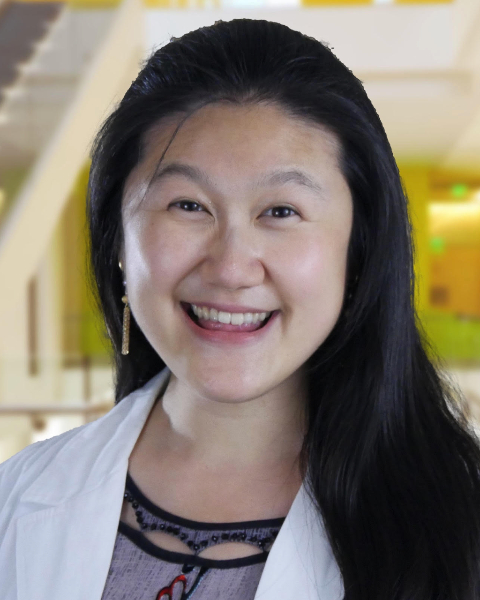PQA 03 - PQA 03 Gynecological Cancer, Pediatric Cancer, and Professional Development Poster Q&A
3488 - Pilot Study of an Integrated Clinical and Didactic Interprofessional Curriculum on Breast Radiotherapy
Monday, September 30, 2024
8:00 AM - 9:00 AM ET
Location: Hall C
Screen: 20

Jie Jane Chen, MD
University of California, San Francisco
San Francisco, CA
Presenter(s)
J. J. Chen, F. Yuen, A. Rode, L. Ni, T. Nano, S. E. Braunstein, C. C. Park, N. D. Prionas, and L. Singer; Department of Radiation Oncology, University of California San Francisco, San Francisco, CA
Purpose/Objective(s): Patients with breast cancer who desire breast conservation often receive lumpectomy followed by adjuvant radiation therapy (RT). Hypofractionation and ultra-hypofractionation have necessitated greater interprofessional collaboration to optimize dose homogeneity and side effect profiles at higher doses per fraction. We hypothesized that the implementation of an interprofessional breast RT curriculum would increase learners’ knowledge of clinical care and comfort with interprofessional collaboration. Materials/
Methods: We developed a novel two-week breast RT curriculum consisting of integrated clinical and didactic components, which we piloted with 3 cohorts of interprofessional learners from 10/2022 to 3/2023. Role-specific learning objectives were provided for each profession. We conducted a mixed methods analysis of learners’ perceptions of curriculum impact. Pre- and post-curriculum surveys were administered with IRB approval, and two-tailed paired t-tests determined differences in scores on a 5-point Likert scale (1: Not at all comfortable to 5: Extremely comfortable). Listening sessions with each cohort of learners were analyzed qualitatively.
Results: Ten interprofessional learners, including physics residents (n = 3), radiation oncology residents (n = 2), breast surgery fellows (n = 2), a dosimetrist (n = 1), a nurse (n = 1), and a medical student (n = 1), completed the pre- and post-curriculum surveys (response rate 100%). Most (60%) had prior lectures on breast RT and associated toxicity management but not clinical experiences (20%). From pre- to post-curriculum, in role-specific domains, there were increases in self-rated comfort with performing breast exams (2.7 vs 3.6, p = 0.009), assessing and managing radiation dermatitis (1.6 vs 3.9, p < 0.001), assessing and managing lymphedema (2.0 vs 3.4, p = 0.004), counseling patients on skin toxicities (2.0 vs 4.1, p < 0.001), positioning patients at simulation (1.5 vs 3.5, p = 0.002), and assessing RT plans (2.1 vs 3.6, p = 0.002). Nearly all (90%) reported that the amount of time spent on lectures, contouring, and treatment planning were each “just right.” Thematic analysis highlighted that the curriculum increased understanding of patient experiences, departmental workflows, and specific collaborative care opportunities during breast RT.
Conclusion: An integrated clinical and didactic curriculum on breast RT positively impacted learners’ understanding of treatment planning, skin care, and interprofessional collaboration. Further studies are needed to assess the impact and sustainability of these skills across clinical environments.
Purpose/Objective(s): Patients with breast cancer who desire breast conservation often receive lumpectomy followed by adjuvant radiation therapy (RT). Hypofractionation and ultra-hypofractionation have necessitated greater interprofessional collaboration to optimize dose homogeneity and side effect profiles at higher doses per fraction. We hypothesized that the implementation of an interprofessional breast RT curriculum would increase learners’ knowledge of clinical care and comfort with interprofessional collaboration. Materials/
Methods: We developed a novel two-week breast RT curriculum consisting of integrated clinical and didactic components, which we piloted with 3 cohorts of interprofessional learners from 10/2022 to 3/2023. Role-specific learning objectives were provided for each profession. We conducted a mixed methods analysis of learners’ perceptions of curriculum impact. Pre- and post-curriculum surveys were administered with IRB approval, and two-tailed paired t-tests determined differences in scores on a 5-point Likert scale (1: Not at all comfortable to 5: Extremely comfortable). Listening sessions with each cohort of learners were analyzed qualitatively.
Results: Ten interprofessional learners, including physics residents (n = 3), radiation oncology residents (n = 2), breast surgery fellows (n = 2), a dosimetrist (n = 1), a nurse (n = 1), and a medical student (n = 1), completed the pre- and post-curriculum surveys (response rate 100%). Most (60%) had prior lectures on breast RT and associated toxicity management but not clinical experiences (20%). From pre- to post-curriculum, in role-specific domains, there were increases in self-rated comfort with performing breast exams (2.7 vs 3.6, p = 0.009), assessing and managing radiation dermatitis (1.6 vs 3.9, p < 0.001), assessing and managing lymphedema (2.0 vs 3.4, p = 0.004), counseling patients on skin toxicities (2.0 vs 4.1, p < 0.001), positioning patients at simulation (1.5 vs 3.5, p = 0.002), and assessing RT plans (2.1 vs 3.6, p = 0.002). Nearly all (90%) reported that the amount of time spent on lectures, contouring, and treatment planning were each “just right.” Thematic analysis highlighted that the curriculum increased understanding of patient experiences, departmental workflows, and specific collaborative care opportunities during breast RT.
Conclusion: An integrated clinical and didactic curriculum on breast RT positively impacted learners’ understanding of treatment planning, skin care, and interprofessional collaboration. Further studies are needed to assess the impact and sustainability of these skills across clinical environments.
